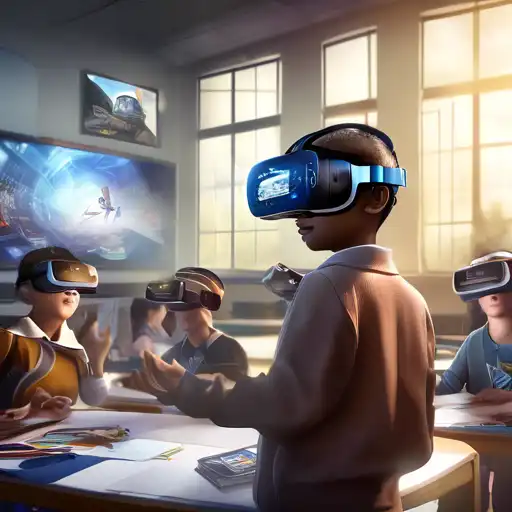Transforming Learning with Virtual Reality: The Future of Education
In the ever-evolving landscape of education, Virtual Reality (VR) stands out as a groundbreaking technology that promises to redefine traditional learning methodologies. By immersing students in a three-dimensional environment, VR offers an unparalleled interactive experience that enhances comprehension and retention. This article explores the transformative potential of VR in education, highlighting its benefits, applications, and the challenges it faces.
The Benefits of Virtual Reality in Education
Virtual Reality brings a host of advantages to the educational sector. Firstly, it provides an immersive learning experience that can make complex subjects more accessible and engaging. For instance, students can explore the human body in 3D, walk through historical sites, or even conduct virtual science experiments. Secondly, VR caters to various learning styles, including visual, auditory, and kinesthetic, making it a versatile tool for educators. Lastly, it offers a safe environment for students to practice skills, such as surgical procedures for medical students, without real-world consequences.
Applications of VR in Educational Settings
The applications of VR in education are vast and varied. In STEM education, VR can simulate laboratory experiments, allowing students to conduct experiments without the need for physical lab space. In history classes, students can virtually visit ancient civilizations, making learning more interactive and memorable. Language learners can immerse themselves in environments where the target language is spoken, enhancing their linguistic skills. Furthermore, VR can support special education by creating tailored experiences that meet the unique needs of students with disabilities.
Challenges and Considerations
Despite its potential, the integration of VR into education is not without challenges. The cost of VR equipment and the development of educational content can be prohibitive for some institutions. Additionally, there is a learning curve associated with using VR technology, both for educators and students. Ensuring equitable access to VR tools is another concern, as disparities in technology adoption could widen the educational gap. However, as technology advances and becomes more affordable, these challenges are likely to diminish.
The Future of VR in Education
The future of VR in education is bright, with ongoing advancements in technology making it more accessible and effective. As educators and developers continue to explore its potential, VR is set to become an integral part of the learning experience. By fostering engagement, enhancing understanding, and providing innovative ways to explore complex subjects, VR is paving the way for a new era in education.
For more insights into how technology is transforming education, check out our articles on Education Technology and Innovative Learning.
